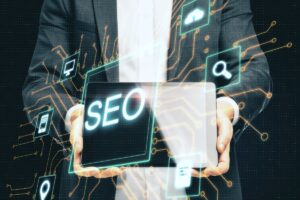Ecommerce growth isn’t accidental; it’s engineered through deliberate improvements across the entire customer journey.
With competition intensifying and customer acquisition costs rising, store owners must optimize every touchpoint-from discovery to checkout to long-term loyalty.
What Drives Ecommerce Growth?
Ecommerce scaling is driven by a combination of four performance pillars:
- Traffic
- Conversion rate
- Average order value
- Customer retention
When these factors work together, brands experience exponential growth, not just incremental increases.
Traffic drives visibility and awareness, but traffic alone doesn’t guarantee sales. A well-optimized store converts more customers from existing traffic, which lowers acquisition costs and increases profitability.
When average order value increases, each purchase generates more revenue. Strong retention ensures customers continue buying without expensive advertising.
Many brands hit a plateau because one of these pillars is undeveloped. You may have strong traffic but weak conversions, or high conversions but limited repeat buyers.
Understanding this framework allows you to clearly identify which area requires optimization to unlock the next stage of growth.
Strengthen Your Ecommerce Foundation

A strong foundation is essential for sustainable growth. Without optimized performance, compelling product pages, and a frictionless checkout, customers simply won’t convert-no matter how much traffic you bring in.
This phase ensures your store is prepared for scale and can convert visitors efficiently.
Website Performance & Technical Optimization
Website speed is one of the strongest predictors of purchase completion.
Google recommends a load time under 2.5 seconds, yet many ecommerce stores exceed 4 seconds and lose potential customers.
Compressing images, using a high-quality hosting provider, minimizing app bloat, and implementing a CDN all improve speed and user experience.
Navigation also plays a huge role in helping shoppers find what they need. Clear category labels, visible search bars, and intuitive menus make the buying journey smoother.
Mobile optimization is non-negotiable, as over 70% of ecommerce traffic occurs on mobile devices. A responsive, uncluttered mobile experience ensures consistency across platforms.
Conversion-Ready Product Pages (PDPs)
Your product pages must function as both a salesperson and a customer support agent. They should clearly explain what the product does, who it’s for, and why it’s worth buying.
High-quality photos, 360° views, and UGC increase trust and reduce doubt. Descriptions should highlight benefits rather than simply listing features.
Trust elements such as reviews, star ratings, certifications, guarantees, and badges reduce hesitation. Transparent shipping and return information helps prevent cart abandonment caused by uncertainty.
High-Converting Checkout Experience
Checkout abandonment is one of ecommerce’s biggest revenue leaks.
Reducing form fields, offering guest checkout, supporting multiple payment methods (Shop Pay, PayPal, Apple Pay, Google Pay), and displaying shipping costs early help customers feel confident completing the purchase.
Security indicators, mobile-friendly forms, and simple error messages improve usability. The best-performing checkouts remove distractions and guide shoppers smoothly to completion.
Proven Ways to Increase Ecommerce Traffic
Traffic growth requires diversification. Depending too heavily on one acquisition channel leaves businesses vulnerable to algorithm changes, rising ad costs, and platform restrictions.
A multi-channel traffic strategy ensures consistent exposure, better cost control, and more long-term stability.
SEO for Long-Term Organic Growth
SEO provides sustainable, compounding traffic that reduces reliance on paid ads. It starts with proper keyword research that identifies both transactional and informational opportunities.
Product keywords target shoppers ready to buy, while informational content supports top-of-funnel discovery and improves brand authority.
On-page SEO includes:
- Optimizing titles
- Metadata
- Product descriptions
- Internal linking
- Image alt-text
Technical SEO ensures:
- Crawler accessibility
- Clean URL structure
- Schema markup
- Mobile responsiveness.
A strong SEO strategy includes content clusters, buyer’s guides, comparison pages, FAQs, and evergreen educational content.
Paid Advertising Across Key Platforms
Paid ads are essential for rapid growth.
- Google Ads capture high-intent buyers actively searching for products.
- Meta Ads excel at discovery and impulse-driven purchases.
- TikTok provides virality and massive reach for visual, trendy products.
- Pinterest is ideal for lifestyle, décor, and inspiration-based brands.
Scaling ads requires strong creative testing, audience refinement, optimized landing pages, and performance monitoring.
Brands that scale profitably use retargeting strategies to capture warm audiences and dynamic product ads to re-engage visitors based on browsing behavior.
Influencer & Creator Marketing

Creator marketing generates authentic content and builds social credibility. Micro-influencers often outperform large influencers because their engagement is highly targeted and personal. UGC videos, testimonials, unboxings, and product demonstrations increase trust and can be repurposed into ads.
Influencer partnerships become powerful long-term growth drivers when combined with affiliate commissions, recurring collaborations, and product seeding programs.
Affiliate & Referral Marketing
Affiliate programs incentivize creators, bloggers, and publishers to promote your products in exchange for commissions. This creates a performance-based growth channel with predictable costs.
Referral programs turn existing customers into brand advocates by rewarding them for sharing your store with friends. This type of word-of-mouth marketing generates high-quality traffic with strong intent.
Marketplace Expansion
Selling on Amazon, Walmart, and Etsy expands your reach beyond your DTC store. These platforms attract millions of shoppers who trust the marketplace and appreciate fast shipping options.
Many successful brands use marketplaces to test product demand, gather reviews, and introduce their products to new customers before funneling them into their direct site.
Improve Conversion Rate (CRO) to Increase Sales
CRO produces some of the fastest revenue gains in ecommerce. Instead of spending more to attract new visitors, you maximize the value of your existing traffic. Even a small increase in conversion rate can significantly lift monthly revenue.
A/B Testing & User Behavior Insights
Testing removes guesswork. Tools like Hotjar and Google Analytics reveal where shoppers click, scroll, or drop off.
A/B testing different headlines, images, CTAs, or layouts allows you to determine what resonates most.
The most successful stores run continuous testing, improving conversions gradually over time.
Personalization & Dynamic Content
Personalized experiences lead to higher engagement.
Showing returning customers recently viewed products, recommending complementary items, and adapting homepage banners based on browsing behavior creates a more intuitive shopping journey.
Personalization tools allow you to deliver contextually relevant offers at exactly the right moment.
Social Proof & Trust Builders
Customers need reassurance before purchasing online. Reviews, video testimonials, customer photos, press mentions, and expert endorsements create credibility.
Real-time tools such as “X people are viewing this item” or “recent purchases” add social validation but should be used authentically.
Boost Average Order Value (AOV)
Increasing AOV is one of the most efficient revenue growth methods because it maximizes revenue from existing customers without additional acquisition cost.
When customers spend more per purchase, profit margins improve and marketing becomes more cost-effective.
| Strategy | Description | Key Benefits |
| Upsells, Cross-Sells & Bundles | Upsells encourage customers to purchase a premium version of a product, while cross-sells highlight complementary items. Bundles package multiple products together to increase perceived value and simplify the buying decision. Logical, relevant recommendations perform best. | Higher average order value, improved shopping experience, increased product exposure |
| Loyalty & Rewards Programs | Loyalty programs reward customers for repeat purchases and engagement. Points, exclusivity, early access, and VIP tiers motivate frequent buying and build emotional connection. | Stronger retention, increased repeat purchases, brand differentiation |
| Strategic Discounts | Threshold incentives like free shipping over a certain amount increase cart size without harming margins. Free gifts, limited-time deals, and subscriber-only promotions add urgency while encouraging higher-value orders. | Larger cart sizes, improved conversion rate, enhanced customer motivation |
Retain More Customers & Build Lifetime Value (LTV)
Retention is where profitability accelerates. First-time customers are expensive to acquire, but returning buyers cost far less and convert faster.
A strong retention strategy ensures your brand remains top-of-mind and encourages customers to make repeat purchases.
| Strategy | Description | Key Benefits |
| Email Marketing | One of the highest-ROI retention channels. Automated flows guide customers through every stage of the lifecycle, while educational content, repurchase reminders, and personalized recommendations strengthen engagement after the first purchase. | Predictable revenue, improved post-purchase engagement, strong customer nurturing |
| SMS Marketing | SMS enables direct, time-sensitive communication with exceptionally high open rates. Product launches, shipping updates, abandoned cart reminders, and VIP promotions perform strongly. Works best when combined with email. | High engagement, fast conversions, strong omnichannel retention |
| Loyalty & Subscription Programs | Subscriptions provide stable recurring revenue and predictable demand. Loyalty rewards, auto-renewal, VIP tiers, and exclusive perks deepen customer relationships and encourage long-term retention. | Increased LTV, more frequent purchases, long-term customer loyalty |
| Exceptional Customer Experience | Responsive support, easy returns, reliable communication, and thoughtful post-purchase care build trust and satisfaction. A strong customer experience turns buyers into repeat customers and generates valuable word-of-mouth. | Higher retention, improved brand reputation, organic referrals |
Scale Operations to Support Growth
Operational efficiency ensures that your business can handle increased volume without sacrificing quality.
Strong operations lower costs, reduce errors, and ensure faster delivery, creating a reliable infrastructure for growth.
Inventory & Supply Chain Optimization

Accurate forecasting prevents stockouts and reduces storage costs. Strong supplier relationships, diversified sourcing, and streamlined fulfillment ensure fast and reliable order delivery.
Many brands partner with 3PLs to scale without managing warehouses themselves.
Automations That Save Time & Improve Margins
Automation reduces repetitive tasks, minimizes human error, and increases efficiency.
Automated customer support, fulfillment triggers, email sequences, and inventory alerts free up your team’s time and help maintain consistency, especially during peak sales periods.
Financial Planning for Scalable Growth
Financial discipline ensures long-term sustainability. Accurate cash flow management, budgeting, forecasting, and profitability analysis guide smart decisions as your business grows.
Understanding your LTV:CAC ratio helps you invest confidently in marketing and product development.
Measuring Success: The KPIs That Matter
Tracking key performance indicators provides clarity on what’s working and what needs improvement. Important metrics include:
- Conversion rate
- Customer acquisition cost
- Average order value
- Lifetime value
- Return rate
- Organic traffic growth
- Repeat purchase rate
- Overall marketing efficiency
By analyzing these data points regularly, brands can make informed decisions that support long-term growth.
Conclusion
Ecommerce growth becomes achievable when you approach it step by step.
Strengthen your foundation, diversify your acquisition channels, improve your shopping experience, and focus on turning first-time buyers into loyal customers. When these elements work together, your brand gains momentum that continues compounding.
Start with the strategies that feel most attainable, and your results will grow steadily and consistently.












